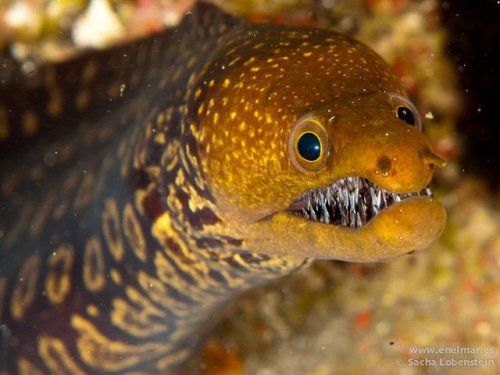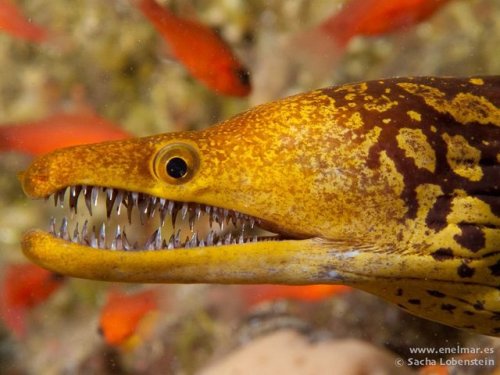Family Names For Family Trees In Japanese
Family names for Family trees in Japanese

(source: http://www.e-keizu.com/info/family.html )
The numbers below match the blue number above in the image.
[M]祖父(そふ sofu), [F]祖母(そぼ sobo)
[M]曾祖父(そうそふ sousofu), [F]曾祖母(そうそぼ sousobo)
[M]高祖父(こうそふ kousofu), [F]高祖母(こうそぼ kousobo)
For big brother/sister of 1, [M]大伯父(おおおじ oooji),[F]大伯母(おおおば oooba) For little brother/sister of 1, [M]大叔父(おおおじ oooji),[F] 大叔母(おおおば oooba)
For big brother/sister of 2, [M]曾祖伯父(そうそはくふ sousohakufu),[F] 曾祖伯母(そうそはくぼ sousohakubo) For little brother/sister of 2, [M]曾祖叔父(そうそしゅくふ sousosyukufu),[F] 曾祖叔母(そうそしゅくぼ sousosyukubo)
For big brother/sister of 3, [M]高祖伯父(こうそはくふ kousohakufu),[F] 高祖伯母(こうそはくぼ kousohakubo) For little brother/sister of 3, [M]高祖叔父(こうそしゅくふ kousosyukufu),[F] 高祖叔母(こうそしゅくぼ kousosyukubo)
For big brother/sister of your father/mother, [M]伯父(おじ oji),[F]伯母(おば oba) For little brother/sister of your father/mother, [M]叔父(おじ oji),[F]叔母(おば oba)
For elder than you, [M]いとこ( itoko )・従兄(じゅうけい juukei),[F]いとこ( itoko )・従姉(じゅうし juushi) For younger than you, [M]いとこ( itoko )・従弟(じゅうてい juutei),[F] いとこ( itoko )・従妹(じゅうまい juumai)
[M]いとこ違い( itokochigai )・従甥(じゅうせい juusei),[F]いとこ違い( itokochigai )・従姪(じゅうてつ juutetsu)
従姪孫(じゅうてっそん juutesson)
For elder than your father/mother, [M]いとこ違い( itokochigai )・従伯父(じゅうはくふ juuhakufu),[F]いとこ違い( itokochigai )・従伯母(じゅうはくぼ juuhakubo ) For younger than your father/mother, [M]いとこ違い( itokochigai )・従叔父(じゅうしゅくふ juushukufu),[F]いとこ違い( itokochigai )・従叔母(じゅうしゅくぼ juushukubo)
For elder than you, [M]またいとこ( mataitoko )・はとこ( hatoko )・再従兄(さいじゅうけい saijuukei),[F]またいとこ( mataitoko )・はとこ( hatoko )・再従姉(さいじゅうし saijuushi) For younger than you, [M]またいとこ( mataitoko )・はとこ( hatoko )・再従弟(さいじゅうてい saijuutei),[F]またいとこ( mataitoko )・はとこ( hatoko )・再従妹(さいじゅうまい saijuumai )
[M]甥(おい oi),[F]姪(めい mei )
[M]姪孫(てっそん tesson)・又甥(またおい mataoi),[F]姪孫(てっそん tesson)・又姪(まためい matamei)
[M/F]曾姪孫(そうてっそん soutesson)
[M/F]玄姪孫(げんてっそん gentesson)
[M/F]孫(まご mago)
[M/F]ひ孫( himago )・曾孫(そうそん souson)
[M/F]やしゃご( yashago )・玄孫(げんそん genson)
[M/F]来孫(らいそん raison)
[M/F]昆孫(こんそん konson)
[M/F]仍孫(じょうそん jouson)
[M/F]雲孫(うんそん unson)
For elder than 1, [M]従祖伯父(じゅうそはくふ juusohakufu )・従大伯父(いとこおおおじ itokooooji ),[F]従祖伯母( じゅうそはくぼ juusohakubo )・従大伯母(いとこおおおば itokooooba) For younger than 1, [M]従祖叔父(じゅうそおじ juusooji)・従大叔父(いとこおおおじ itokooooji),[F]従祖叔母(じゅうそおば juusooba)・従大叔母(いとこおおおば itokooooba)
[M/F]三いとこ(みいとこ miitoko)・その又いとこ(そのまたいとこ sonomataitoko)
Also
You: 自分(じぶん jibun) Mather:母(はは haha) / Father: 父(ちち tsitsi)
(source: http://www.e-keizu.com/info/family.html )
Although I am a Japanese, I can’t call them all correctly… Does your language have the names?
More Posts from Philosophical-amoeba and Others




The Origin of Species by Means of Natural Selection or the Preservation of Favoured Races in the struggle for life Charles Darwin
London John Murray Sixth Edition with additions and corrections (Forty Third Thousand) The sixth edition [shown here] (first printed in 1872) - is the edition in which the word “evolution” was used for the first time (although Darwin used this term in the Descent of Man, published a year before; in 1871). This edition was also the last that Charles Darwin revised during his lifetime, including the addition of an entirely new chapter. In 1876 Darwin added a few small corrections, and all subsequent printing were copies of that printing.
a clean tight fresh presentable copy - which remains largely unread - even after 124 years - a large portion of the book remains unopened [the leaves of the book remain joined at the folds; not slit apart]
Joan Beauchamp Procter: her best friend was a Komodo dragon and if that doesn’t entice you to read this, I don’t know what will
Joan Beauchamp Procter is a scientist every reptile enthusiast should admire.

Joan was an incredibly intelligent young woman who was chronically ill (and as a result of her chronic illness, physically disabled by her early thirties). Her health issues kept her from going to college, but that did not stop her from studying and keeping reptiles. She presented her first paper to the Zoological Society of London at the tender age of nineteen, and the society was so impressed that they hired her to help design their aquarium. In 1923, despite having no formal secondary education and despite being only 26 years old, she was hired as the London Zoo’s curator of reptiles. Now, that in and of itself is an awesome accomplishment, but Joan was absolutely not content to maintain the status quo. Nosiree, by the age of 26 Joan had already kept many exotic pets (including a crocodile!) and knew a thing or two about what needed to be done to improve their lives in captivity. So Joan got together with an architect, Edward Guy Dawber, and designed the world’s first building designed solely for the keeping of reptiles. She had some really, really great ideas. Her first big idea was to make the building differentially heated- different areas and enclosures would have different heat zones, instead of having the whole building heated to one warm temperature. She also set up aquarium lighting- the gallery itself was dark, with dim lights on individual enclosures to make things less stressful for the inhabitants. She also insisted on the use of special glass that didn’t filter out UVB. This meant that reptiles could synthesize vitamin D and prevented cases of MBD in her charges.

But advances in enclosure design weren’t Joan’s only contribution to reptile keeping. She was also one of the first herpetologists to study albinism in snakes- she was the first to publish an identification how albinism manifests in reptile eyes differently than in mammal eyes, and stressed the importance of making accurate color plates of reptiles during life because study specimens often lose pigmentation. She also was really hands-on with many species, including crocodiles, large constrictors, and monitor lizards. Joan had this idea that if you socialize an animal and get it used to handling, then when you need to give it a vet checkup, things tend to go a lot better. This really hadn’t been done with reptiles before. She was able to identify many unstudied diseases, thanks to her patient handling of live specimens, and by being patient and going slow, she managed to get a lot of very large, dangerous creatures to trust her. One of them (that we know of) even came to like her- a Komodo dragon named Sumbawa.

In 1928, two of the first Komodo dragons to be imported to Europe arrived at the London Zoo. One of them, named Sumbawa, came in with a nasty mouth infection. His first several months at the zoo were a steady stream of antibiotics and gentle care, and by the time he’d recovered enough for display, he had come to be tolerant of handling and human interaction. In particular, he seemed to be genuinely fond of Joan. She was their primary caretaker and wrote many of the first popular accounts of Komodo dragon behavior in captivity. While recognizing their lethal capacity, she also wrote about how smart they are and how inquisitive they could be. In her account published in The Wonders of Animal Life, she said that "they could no doubt kill one if they wished, or give a terrible bite" but also that they were “as tame as dogs and even seem to show affection.” To demonstrate this, she would take Sumbawa around on a leash and let zoo visitors interact with him. She would also hand-feed Sumbawa- pigeons and chickens were noted to be favorite food, as were eggs.
Joan died in 1931 at the age of 34. By that time she was Doctor Procter, as the University of Chicago had awarded her an honorary doctorate. Until her death, she still remained active with the Zoological Society of London- and she was still in charge of her beloved reptiles. Towards the end of her life, Joan needed a wheelchair. But that didn’t stop her from hanging out with her giant lizard friend. Sumbawa would walk out in front of the wheelchair or beside it, still on leash- she’d steer him by touching his tail. At her death, she was one of the best-known and respected herpetologists in the world, and her innovative techniques helped shape the future of reptile care.

NCLEX Pharmacology Medical Suffixes
-amil = calcium channel blockers
-caine = local anesthetics
-dine = anti-ulcer agents (H2 histamine blockers)
-done = opioid analgesics
-ide = oral hypoglycemics
-lam = anti-anxiety agents
-oxacin = broad spectrum antibiotics
-micin = antibiotics
-mide = diuretics
-mycin = antibiotics
-nuim = neuromuscular blockers
-olol = beta blockers
-pam = anti-anxiety agents
-pine = calcium channel blockers
-pril = ace inhibitors
-sone = steroids
-statin =antihyperlipidemics
-vir = anti-virais
-zide = diuretics
What’s Up for May 2016?

What’s Up for May? Two huge solar system highlights: Mercury transits the sun and Mars is closer to Earth than it has been in 11 years.

On May 9, wake up early on the west coast or step out for coffee on the east coast to see our smallest planet cross the face of the sun. The transit will also be visible from most of South America, western Africa and western Europe.

A transit occurs when one astronomical body appears to move across the face of another as seen from Earth or from a spacecraft. But be safe! You’ll need to view the sun and Mercury through a solar filter when looking through a telescope or when projecting the image of the solar disk onto a safe surface. Look a little south of the sun’s Equator. It will take about 7 ½ hours for the tiny planet’s disk to cross the sun completely. Since Mercury is so tiny it will appear as a very small round speck, whether it’s seen through a telescope or projected through a solar filter. The next Mercury transit will be Nov. 11, 2019.

Two other May highlights involve Mars. On May 22 Mars opposition occurs. That’s when Mars, Earth and the sun all line up, with Earth directly in the middle.

Eight days later on May 30, Mars and Earth are nearest to each other in their orbits around the sun. Mars is over half a million miles closer to Earth at closest approach than at opposition. But you won’t see much change in the diameter and brightness between these two dates. As Mars comes closer to Earth in its orbit, it appears larger and larger and brighter and brighter.

During this time Mars rises after the sun sets. The best time to see Mars at its brightest is when it is highest in the sky, around midnight in May and a little earlier in June.

Through a telescope you can make out some of the dark features on the planet, some of the lighter features and sometimes polar ice and dust storm-obscured areas showing very little detail.

After close approach, Earth sweeps past Mars quickly. So the planet appears large and bright for only a couple weeks.

But don’t worry if you miss 2016’s close approach. 2018’s will be even better, as Mars’ close approach will be, well, even closer.
You can find out about our #JourneytoMars missions at mars.nasa.gov, and you can learn about all of our missions at http://www.nasa.gov.
Make sure to follow us on Tumblr for your regular dose of space: http://nasa.tumblr.com

For you military history enthusiasts out there!
World War II in Southeast Asia as shown by this map, titled Japanese Centrifugal Offensive (offense?) and its clashes with other European forces occupying the region, December 1941 - April 1942.
In blue are notable major battles such as the Battles of Sunda Strait (February 28), Java Sea (February 27), Balikpapan (January 23 - 24), Lombok Straits (February 18 - 19). After the surprising Pearl Harbor attack the Japanese managed to curb the European defense over Southeast Asia, also in a surprising manner due to unpreparedness.
[Larger view] - [more photos]




I made this to put on my wall for revision, but I thought it might be helpful for some of you guys too so I thought I would share it!
In a recent video, Practical Engineering tackles an important and often-overlooked challenge in civil engineering: dam failure. At its simplest, a levee or dam is a wall built to hold back water, and the higher that water is, the greater the pressure at its base. That pressure can drive water to seep between the grains of soil beneath the dam. As you can see in the demo below, seeping water can take a curving path through the soil beneath a dam in order to get to the other side. When too much water makes it into the soil, it pushes grains apart and makes them slip easily; this is known as liquefaction. As the name suggests, the sediment begins behaving like a fluid, quickly leading to a complete failure of the dam as its foundation flows away. With older infrastructure and increased flooding from extreme weather events, this is a serious problem facing many communities. (Video and image credit: Practical Engineering)











The Roly Poly Pudding - Beatrix Potter
First Edition - Second Printing 1908
[5500 copies Dec. 1908]
-
 philosophical-amoeba reblogged this · 8 years ago
philosophical-amoeba reblogged this · 8 years ago -
 forgetful-amoeba liked this · 8 years ago
forgetful-amoeba liked this · 8 years ago -
 kokuyo-gang liked this · 8 years ago
kokuyo-gang liked this · 8 years ago -
 betterthannonfiction-blog liked this · 8 years ago
betterthannonfiction-blog liked this · 8 years ago -
 phonetish reblogged this · 8 years ago
phonetish reblogged this · 8 years ago
A reblog of nerdy and quirky stuff that pique my interest.
291 posts


